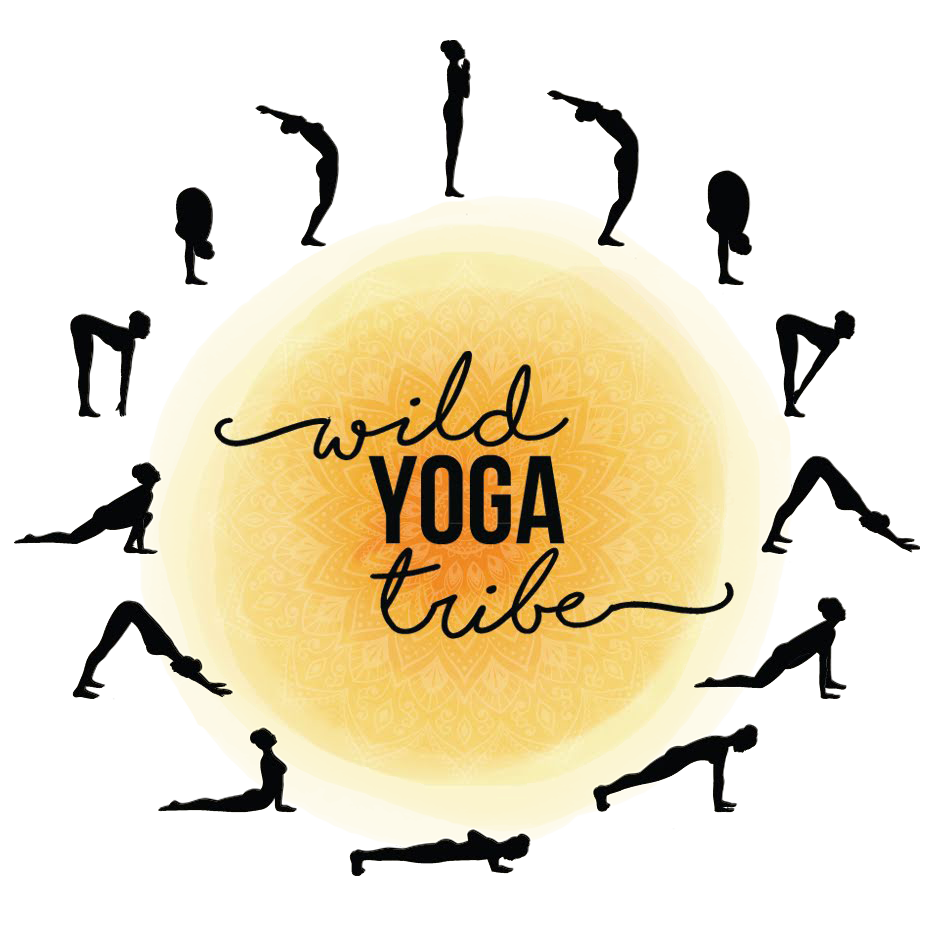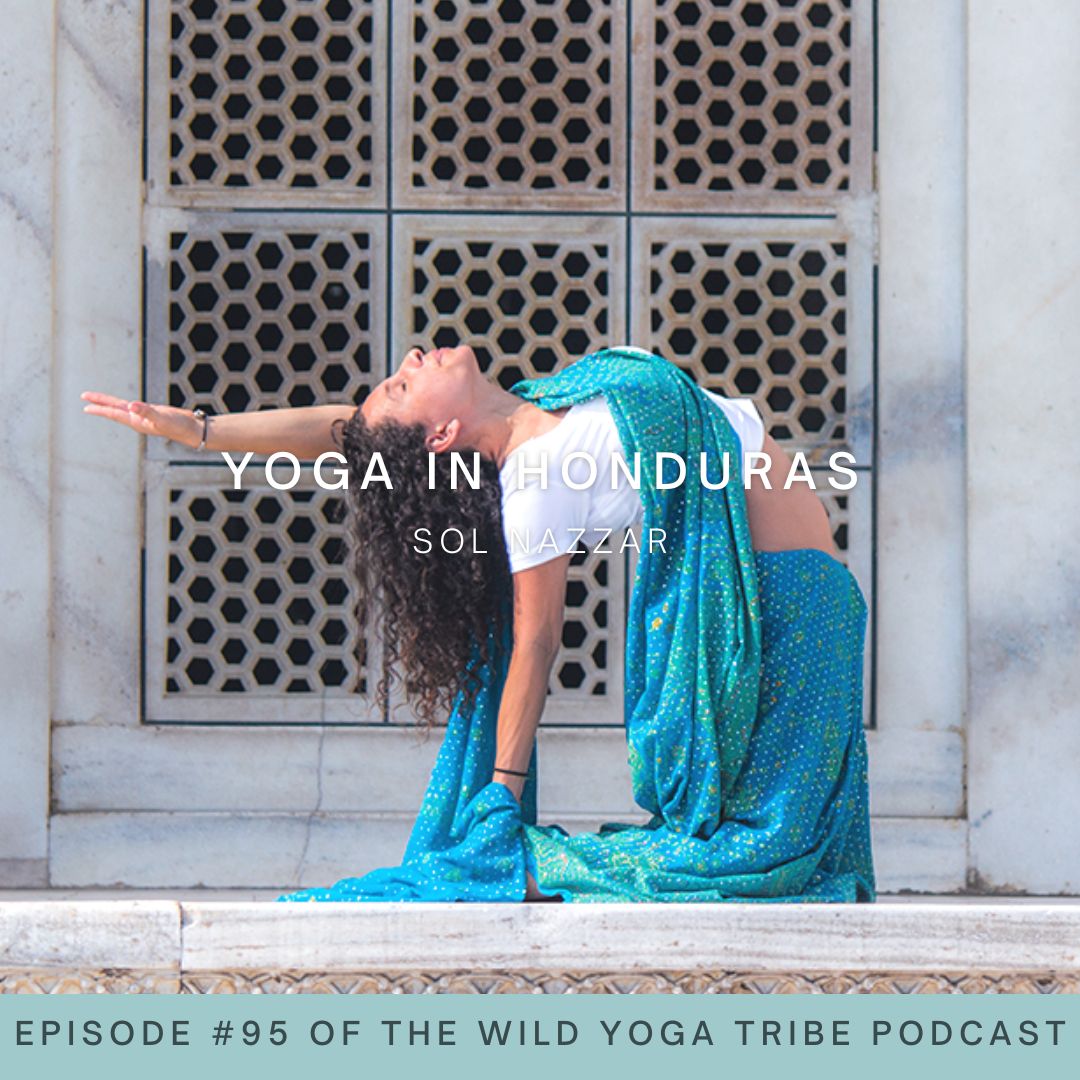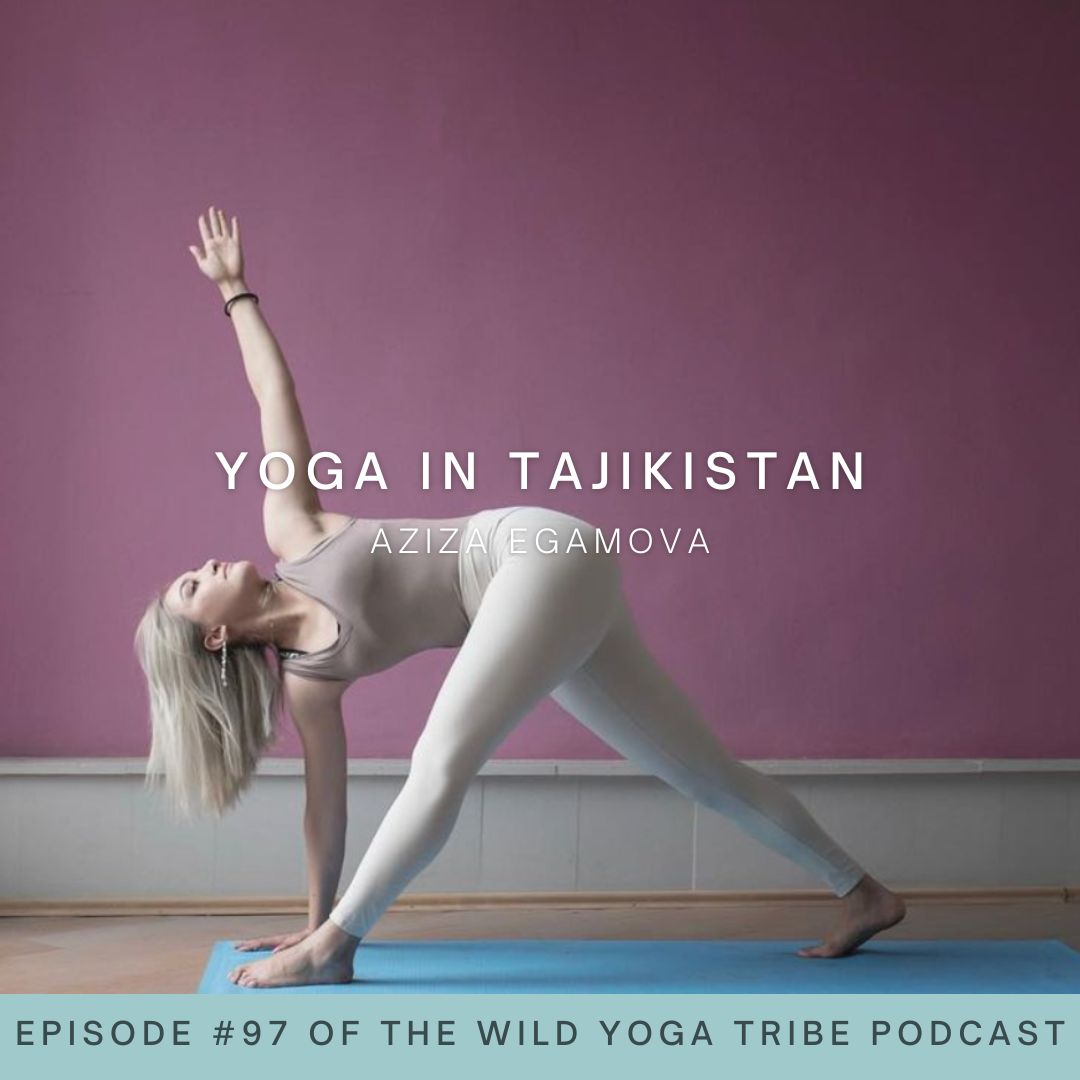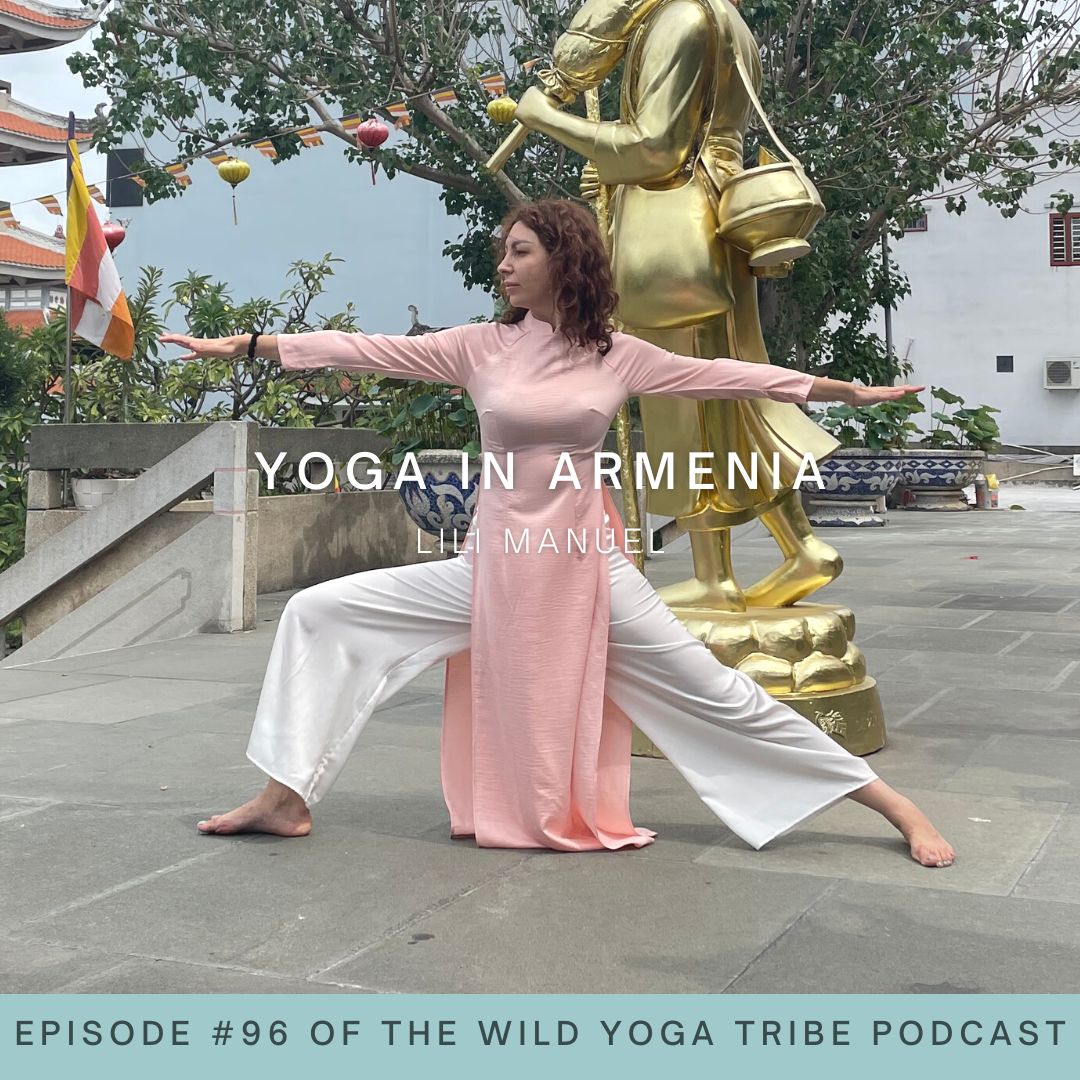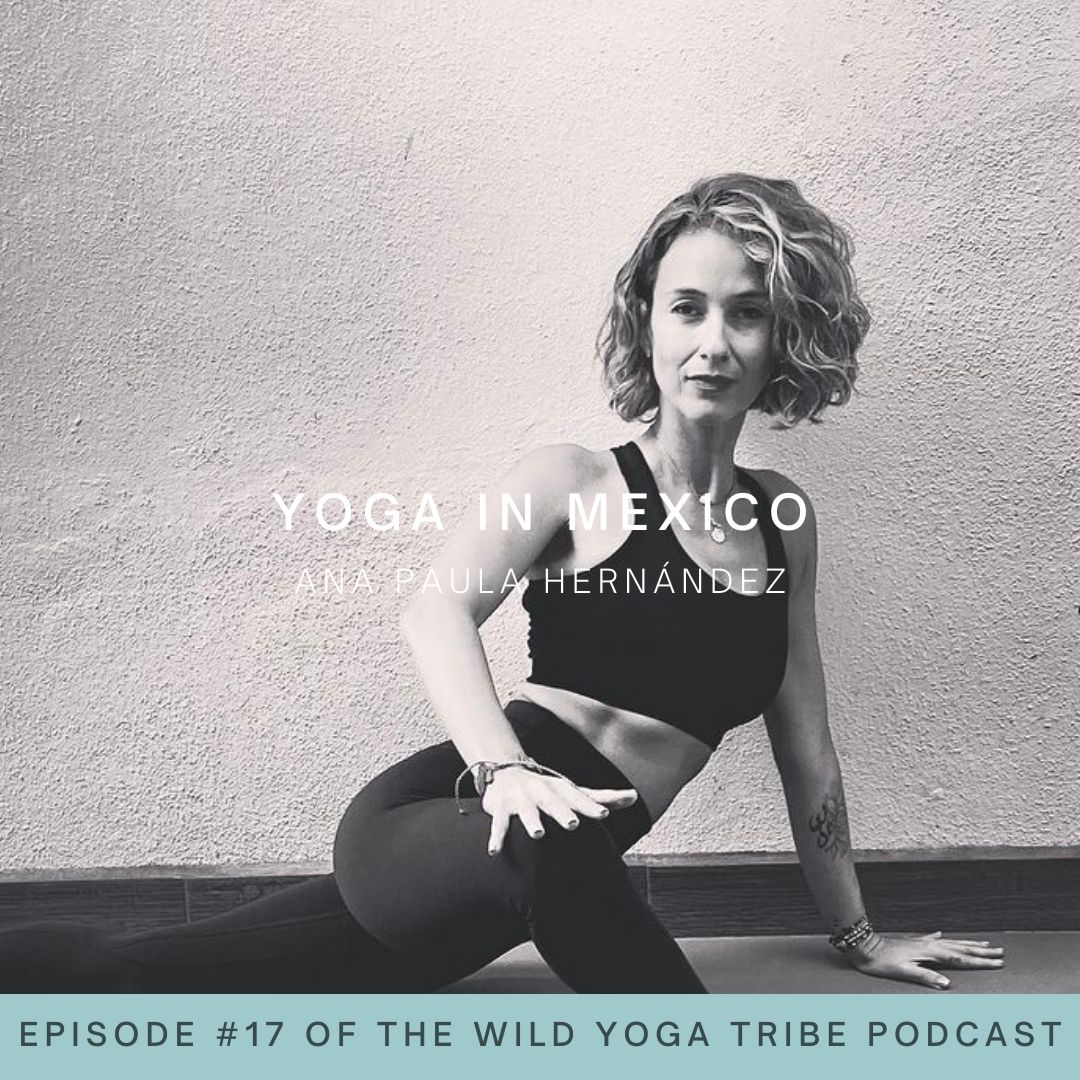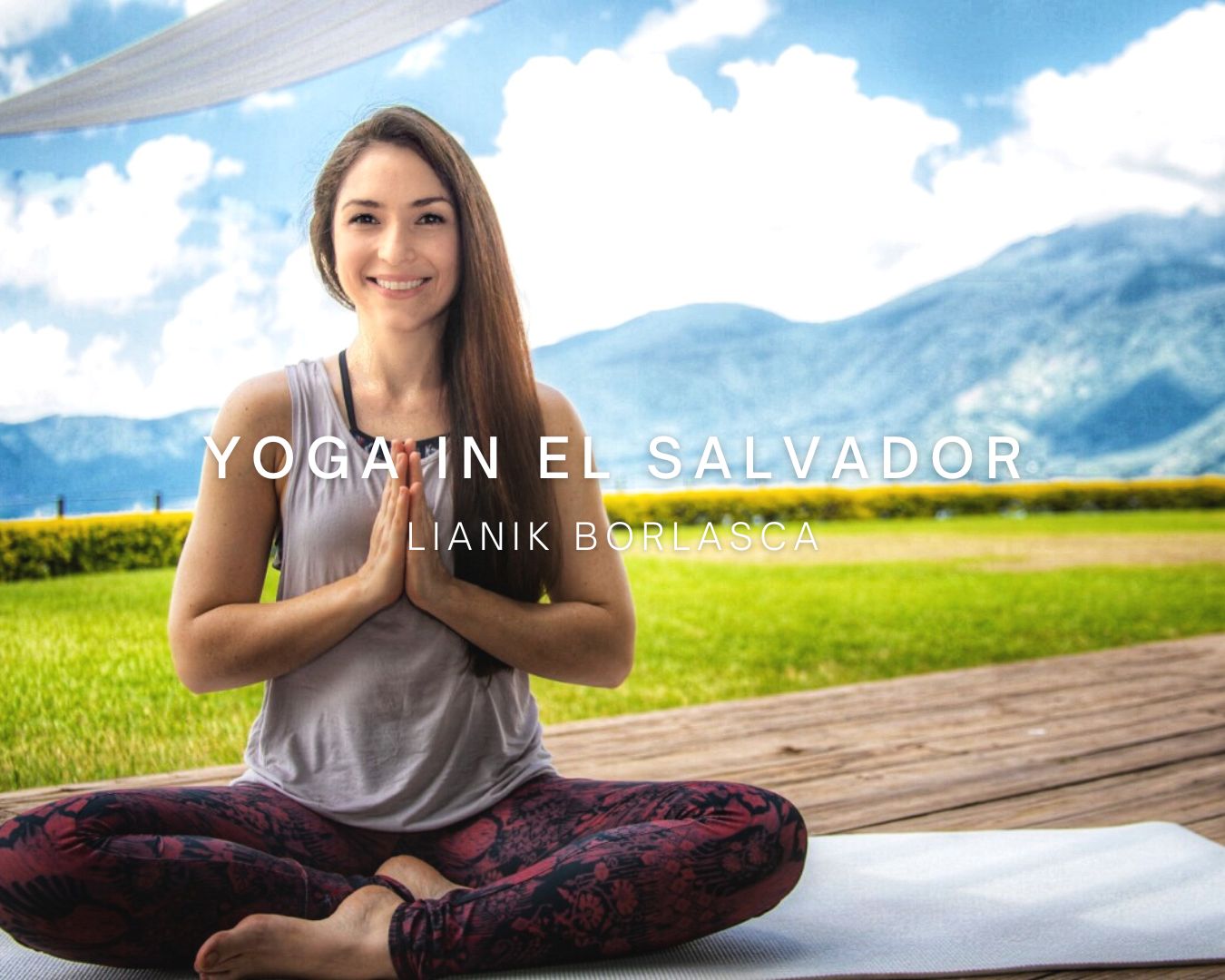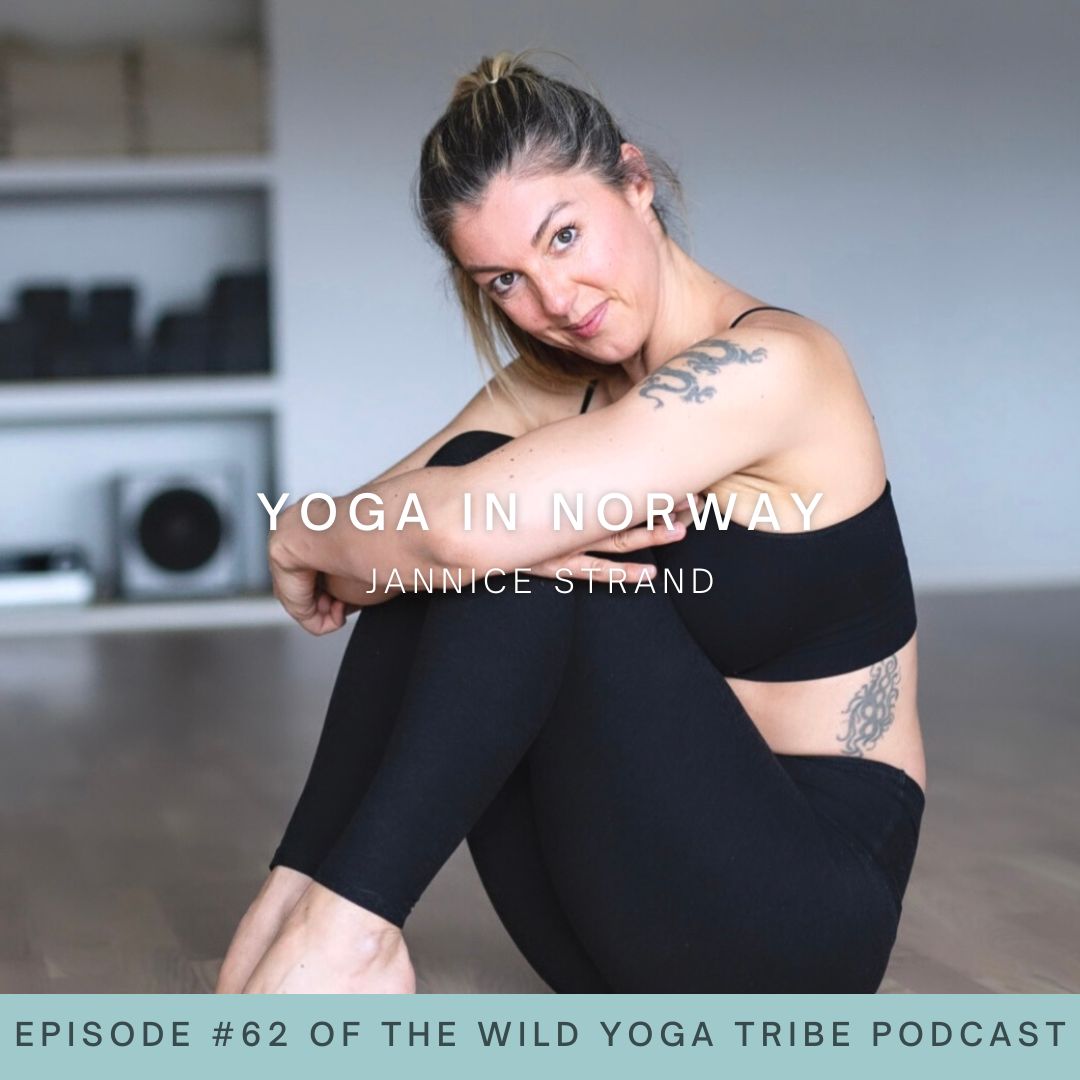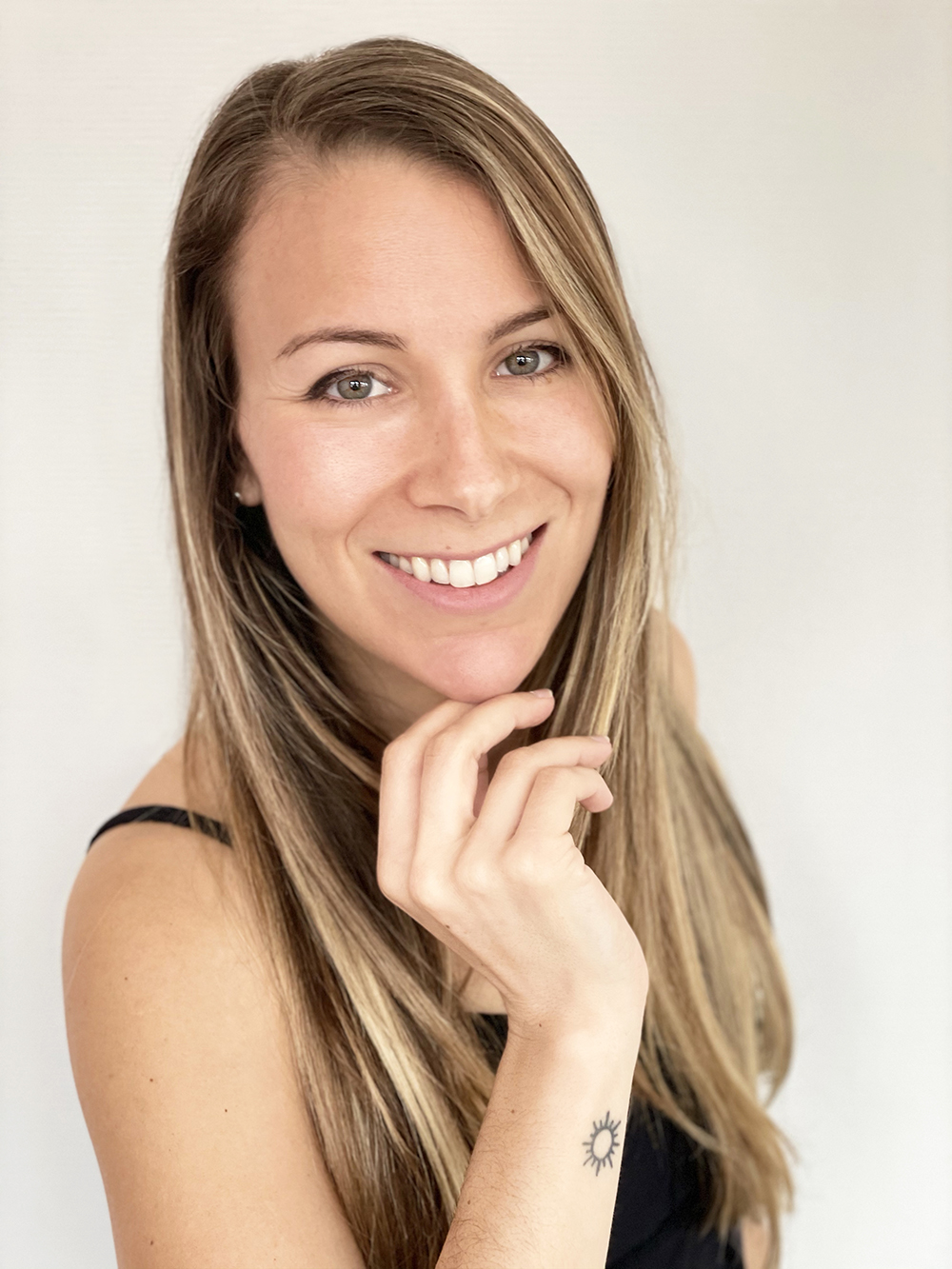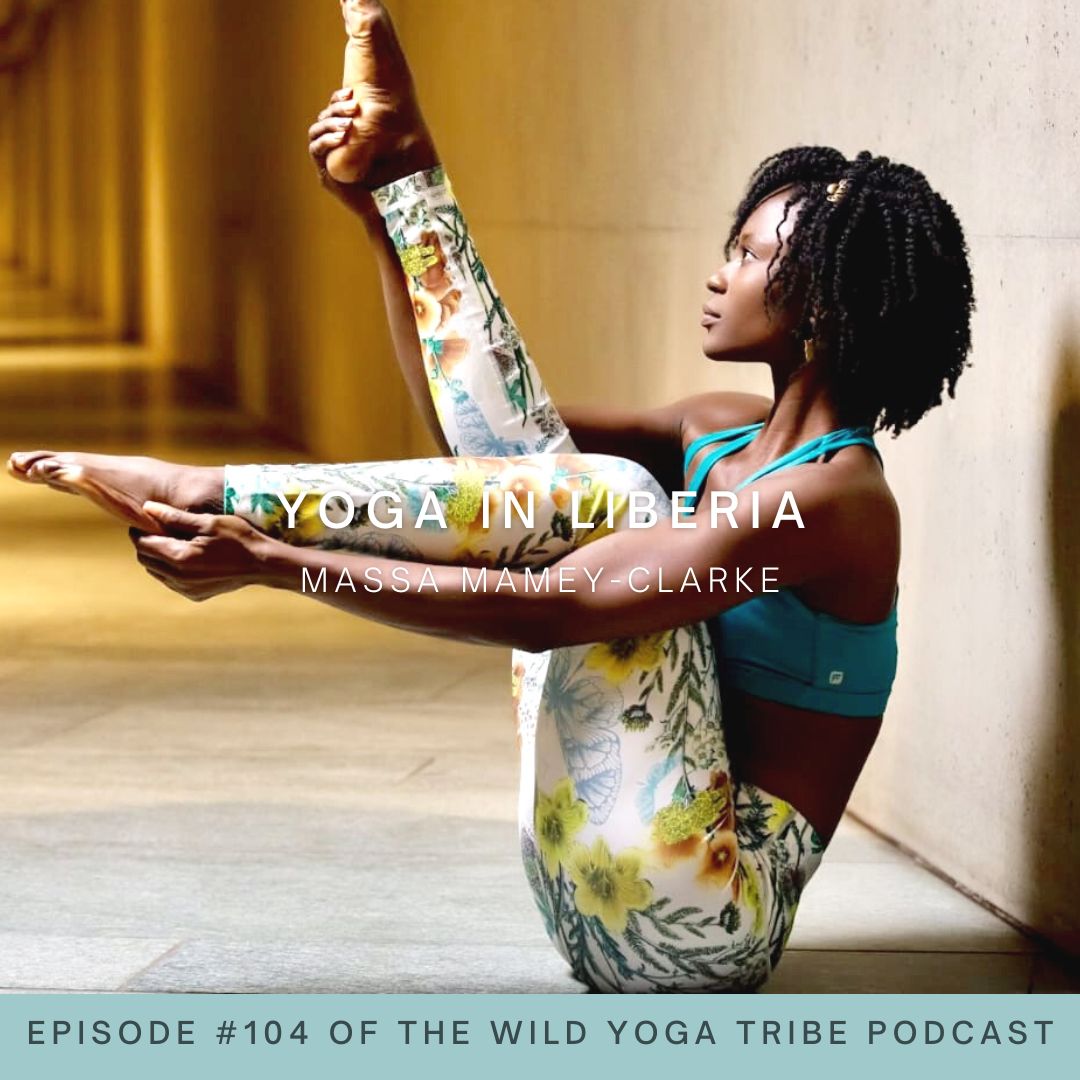
EPISODE #98 – YOGA IN IRAN
Meet Maryam Daneshpour
Meet Maryam Daneshpour, a yoga teacher from Iran, who sheds light on the presence and evolution of yoga in HER country. Explore the rich cultural heritage of Iran as Maryam shares her insights into the diverse geography, warm hospitality, and her personal definition of yoga, highlighting its profound impact on mental and physical well-being. Welcome to yoga in Iran!
Wild Yoga Tribe Podcast Episode #98 – The Creativity in Yoga – Yoga in Iran with Maryam Daneshpour
Welcome to Episode #98 of the Wild Yoga Tribe Podcast! My conversation with Maryam Daneshpour, a yoga teacher from Iran, was so powerful as we looked at the creative elements and aspects of yoga, and what Maryam is dreaming up to help serve yoga practitioners through her company, Mada Design. Maybe our conversation made you want to be more intentional with your time and energy, or to make sure you cultivate spaces to be in the present moment. If you’re looking to tune into a podcast episode that is all about yoga in Iran then this is the conversation for you.
Tell me more about Maryam Daneshpour
Maryam Daneshpour, a yoga teacher from Iran has bee a yoga teacher for five years. She was certified with a 200-hour Yoga Teacher Training in Hatha Yoga from Mysore, India. Beyond yoga, she holds a degree in Industrial Design and owns Mada Design Studio. With a foundation in Hatha Yoga, her classes emphasize the essence of yoga while incorporating pranayama and meditation for comprehensive well-being.
What to expect in the Yoga In Iran episode of the Wild Yoga Tribe Podcast
In this episode of the Wild Yoga Tribe podcast, Maryam Daneshpour, an Iranian yoga teacher, shares insights about the presence and growth of yoga in Iran. She discusses how yoga, once a small and lesser-known community, is now widely available in various neighborhoods through local gyms and sports centers.
Maryam explains the evolution of yoga in Iran, with dedicated studios and online classes now becoming prevalent. She highlights the emergence of Iranian yoga teachers both within the country and abroad, indicating the increasing interest in yoga. Teaching yoga in the local language, Persian, is emphasized as a way to make it accessible to people in Iran.
Maryam’s background in industrial design influences her yoga teaching approach. She mentions that designing yoga classes and sequences requires creativity, much like design. She also expresses her passion for creating adjustable tools that could assist yogis with limited mobility, providing them with safer and more effective ways to practice different poses.
Maryam defines yoga as a discipline and lifestyle that trains the mind, fosters mental control, and cultivates present-moment peace. She underscores the accessibility of yoga and its ability to be practiced even in brief moments. Maryam’s personal definition encompasses both the physical and mental aspects of yoga, emphasizing mindfulness and balance in life.
Throughout the conversation, Maryam emphasizes the importance of being present in the moment and detaching from worries about the past or the future. She discusses her approach to teaching yoga as a passion rather than a job and the profound impact it has on her life. The episode showcases the power of yoga to create connections, bring people together, and offer a sense of calm and mindfulness in an increasingly fast-paced world.
Favorite Quote From Maryam Daneshpour
“You don’t need any tool, you don’t need anything else other than yourself, your mind, and your breath. And your body, of course. And this is like something I think it’s accessible to everyone. And yoga itself, the biggest lesson it has taught me, it’s about how to be at peace.”
What’s in the Yoga in Iran?
Feel like skimming?
Design and yoga synergy
Embracing the present moment
Teaching yoga as a passion not as a job
Yoga's creative dimension
The evolution of yoga in Iran
Connect with Maryam Daneshpour
https://www.instagram.com/Ma.da_yoga
Support the podcast:
https://www.patreon.com/wildyogatribe
Want more?
https://wildyogatribe.com/thepodcast/
Everything you need is just one click away! Check out all the resources here: https://linktr.ee/wildyogatribe
PODCAST TRANSCRIPTION
Read + Reflect + Respond
Wild Yoga Tribe Podcast Episode #98 – Yoga in Iran with Maryam Daneshpour Transcription
[00:00:00] Lily Allen-Duenas: Namaste family and welcome back to the Wild Yoga Tribe podcast. Today I am so excited to be joined by Maryam Daneshpour. She’s a yoga teacher from Iran who has been teaching yoga for five years. She was certified with a 200 hour yoga teacher training in Hatha yoga from Mysore, India. And beyond yoga, she holds degrees in industrial design.
And she owns Mada Design Studio. So with the foundation in Hatha Yoga, her classes emphasize the essence of yoga while incorporating pranayama and meditation for comprehensive well being. So thank you so much Maryam for joining me on the show today.
[00:00:41] Maryam Daneshpour: Hello Lily, I’m so excited to be here. How are you?
[00:00:45] Lily Allen-Duenas: I’m good. A little sick. Maybe my listeners can notice that my voice is a little lower than normal, a little under the weather. But I’m hopefully gonna be better any day now because it’s been about a week of this cold.
[00:00:58] Maryam Daneshpour: You do sound perfect to me, beautiful voice as always.
[00:01:02] Lily Allen-Duenas: Oh, thank you. Thank you. So Maryam, just to start the conversation for us, you and I, and for our listeners, how did yoga first come into your life?
How did yoga come into your life?
[00:01:11] Maryam Daneshpour: The first time that I stepped into a yoga studio, it was I was around 23, 24 years old, and it came to me through my mom. Actually, basically, like, where we used to live in our neighborhood, there was like a local gym that they offer different type of [00:01:30] sports, and, my mom, she was doing Pilates, and she was joining the yoga classes, but it was not what she wanted. She liked more of an different style of a sport strength, and activity. But, when she told me that there’s a yoga, and you should try it, I said, okay, let me just go ahead and see what is it about.
Because, a few years back, I heard. About yoga through one friend who was like a teacher. And I never attended the classes. So I said, okay, I’m going to try. And once I joined for the first time, there was something about it that really caught me. And if I want to say what exactly it was, I couldn’t say it in the first day, but as I kept practicing, it came to me to know that once I’m stepping into the yoga studio and I’m practicing I just lose the passing of time, and also…
I was learning that I’m at the present moment. I feel that I lose the connection with the world outside of the studio. I’m not thinking about anything else, any worries, classes. That time I was going to university nothing. I was there with myself at peace.
And that is the main reason that I kept continuing doing yoga. Up to that moment I had a… background of a sport. Since I was 10 or 11, I was doing like competitive swimming, and it was always [00:03:00] the sport to me was about competition. Since I was a teenager, I was always in the swimming team at the school, and I was always doing trainings.
And once… I was going to the pool. I had this idea that, okay, I have to be fast. I have to be better. I have to be better with the person next to me. And stepping into yoga studio to me was that I am actually in competition with myself, and that is what was really interesting to me. And like it made yoga a passion.
I was waiting for the days of the classes to come. I could go and join the classes at the studio. And I have to also be honest and say that the first practice of me was with a very nice teacher. She was really into yoga and into sacred practice of yoga. Not just into the form that nowadays we see.
It’s being physical and like getting to do this pose and that pose and how I can get to do certain pose or posture. And it was just mainly feeling the moment and how to enjoy the practice. Like exactly whether it was… Meditation, or whether it was pranayamas, or it was like the physical part of the yoga.
It was all merged into each other, and she was really doing it beautifully. And that was like maybe one of the reasons that I [00:04:30] got really into it.
[00:04:31] Lily Allen-Duenas: It is so powerful to find the right teacher, isn’t it?
[00:04:34] Maryam Daneshpour: Yeah.
[00:04:34] Lily Allen-Duenas: and then also to have it be from the beginning, like your first teacher to have that ability to really create union between all of the modalities or elements and the limbs of yoga. So it’s definitely a big gift when that happens right from day one.
And as you said, it’s like that first day, that first class you couldn’t quite put your finger on it, what it was, but you kept coming back. So now do you feel like you can put your finger on it? How would you define what you were experiencing?
How to define what yoga was exeperiencing at the yoga studio in Iran
[00:05:05] Maryam Daneshpour: Yeah, basically, like to me, exactly, it become like the sacred corner of my life, which is if I feel doubtful or stressful it is one of the tools, one of the most beautiful tools that I can say I can use to just ease myself at any point. going into the yoga class and stepping on the mat, I knew that I’m putting a switch off button at that moment, and I’m starting something which is gonna keep me away of everything, every, stress out there, outside of this door.
And I’m just practicing here with my student, and I’m just here at the right moment, and this is the moment that life is happening. My mind is not in the past. It’s not in the future, I’m not worrying, I’m not [00:06:00] stressing, and I’m just here on the mat practicing. Giving it all 100% of myself to this practice.
And that is exactly what happened to me when I started practicing. When I was at the yoga studio, I was there 100%. Yes. There were times that my mind will jump, after all, we’re all humans, and this will happen to all of us in the middle of the practice, like some time, maybe our mind will get distracted, But we will stay focused, and this is one of the biggest lessons, I think, that I got from yoga, to stay in the present moment, and not to worry what is happening after two hours. If I want to tell you about my life because yoga to me is as a passion, I’m doing it, it’s not a job.
I love teaching just because of the, the feeling that it brings to me and spreading this beautiful art and lifestyle to as much humans as we can.
[00:06:59] Lily Allen-Duenas: What I love hearing you say is how stepping on your yoga mat was like switching an off switch. Okay, the rest of the day is gone, or the rest of the morning or the whatever’s coming up next in the evening, like it’s just all off and you get to be on your mat or on in that time and in that space, just completely present.
I like that analogy so much about saying the off switch because I really do feel that it is so important for us to be in the present moment and when we are filled with our [00:07:30] day to day lives filled with distractions- the buzzes of our phone, the dings of our email, the car horns, the honking the TV in the background, that there’s just so much going on.
So I love the idea of stepping on the mat. And really stepping away from everything. But on the flip side of that, it is such an amazing time to practice with everything that’s arising too, so not shutting out what’s going on or turning off our mind or our hearts or our emotions, being open and on to what’s inside of us and off, I think, to what is external, the internal and external, right?
Yoga is a passion, not a job
[00:08:05] Maryam Daneshpour: Yeah correct, and if I want to tell you about my life, see, I’m doing yoga as a passion, not as a job, so basically if I want to say, the income part for me, it’s not important at all, and I’m a designer, and I’m running a interior design company as well, so I have a big chaos going on, dealing with clients, with subcontractors, with difficulties in its own world, which is at the same time, I feel blessed that I can do that.
But at the same time, I have a big let’s say, case maybe going on. For example, tomorrow, maybe I have a big meeting or I have a big presentation about like the case going on. But I know that tonight, let’s say I’m gonna record a podcast, right? And what I did once I come home, I said, okay. Now is the time that I’m gonna have with Lily.
And like [00:09:00] this is a blessing to talk about yoga with her. And what I need to enjoy this moment, the same way that, when I go to the yoga class and I switch off outside world and I enjoy the moment. I have to be able to enjoy this one hour that I’m gonna spend talking with Lily, right?
So I put on some candles, I put some tea next to me, and I decided that I will not think about tomorrow, I’m just gonna be present now, and I will give my hundred percent, all my cells of my body to this podcast with Lily now. And if I look at it this way, I can say that actually life is the present moment, right?
We’re too much like into our heads worrying about the next day or the next hour, which is we forget about the right exact moment, right?
[00:09:47] Lily Allen-Duenas: Yes. Yes. And my husband asked me an interesting question the other night at dinner, and I appreciate that he asks interesting questions, but he asked me, what are you obsessed with lately? And I don’t know, what pops in your mind. It can be yoga or it can be a new book you’re reading. But for me, I was thinking how I sometimes feel obsessed with the future, obsessed with hitting a goal or creating something or planning a retreat or…
just all these things that I think are happening in the future, I think so much my energy is directed towards building and creating. And I love how you brought that up about how we are very future focused, but life does happen here in this present moment. Something I know and I [00:10:30] practice, but creating the space, and I love that you did it for me here on the podcast so much, but creating the space to be present.
And setting the intention to be present for this time and present with a certain thing in your life. It doesn’t have to be a podcast, of course, for our listeners. It can be a dinner with your friend or a partner or it can be anything, but having that clear intention of being present.
[00:10:55] Maryam Daneshpour: Yeah, correct. Exactly.
[00:10:58] Lily Allen-Duenas: And, Maryam, I know that you do have this degree in industrial design and you do own the Mada Design Studio, and as you mentioned, you teach yoga as a passion, not as a full time job. But is there anything in particular about your background in design that you bring into your approach for teaching yoga? Are there any synergies between these two different disciplines?
Yoga and Design: Are there any synergies between these two different disciplines?
[00:11:21] Maryam Daneshpour: I think I can maybe say that when I remember I was in Mysore and we were getting the lessons of teaching methodology and how to design your Step by step teaching and that part of being a teacher, I believe how you will design a class and how you will approach for your students.
Every day it’s not something just repeating and bringing it into that zone, which is they might say that, oh, this is like every time it’s repeating the same thing. So as a yoga teacher, you need to be also creative. You need to create [00:12:00] different sequences and also thinking okay what I’m going to give them like for the next class, or sometimes it happens in the moment.
Sometimes you’re not designing a sequence of your practice for the students. Sometimes You will just decide it in the moment. So I think maybe that creativity part somehow could be related. And from the other aspect, I have always had like idea of designing some products for the yogis.
Like some movements, and they have limited mobility, and they need to get assistance of some tools, right? That is actually one of the things I’m thinking, because industrial design basically is A big line of product designing, right? You can be a product designer of anything lighting designing, it can be furniture designing, it can be electronics actually the coverage of the electronics, like packaging, or so I was thinking I could Start designing a line of products related to yoga, which could assist many people that have difficulty with movements.
And this is going to be happening in the future with Mada Design Studio as well. I think that is one of the reasons I chose the same name, which is my initials. Mada, as Maryam Daneshpour for design and also for yoga.
[00:13:21] Lily Allen-Duenas: Ooh, beautiful. I love that you have the passion to create products for yoga teachers who may be needing something, [00:13:30] and you’re curious about serving those needs through a product, or do you have any that you want to share, or does that feel like, oh, it’s just too up in the cloud.
Yoga products ideas by Mada Design
[00:13:39] Maryam Daneshpour: No, I can’t share. Yeah, I can share because I have thought about it a lot and I have cooked some ideas. Back in Mysore, I remember there was one corner of our shala which we had some like wooden tools actually like even they were big ones for people who for example like they want to try back bending so basically it was like a big curve that you could lie down on it and like it will let your head hanging from the other side and like your back bend will be like even up to 90 degree but it was not adjustable and it was just stuck and you couldn’t fix it according to your body.
Let’s say mobility, if you can go up to 60 degree only backbend, then you couldn’t go further more and it was not safe to use it. So I think like some adjustable tools could be helping so many people to do so many of the moves and poses in a safer way. Like usually we use bands or blocks to help ourselves to fill the gap and space. So if we have some useful tools at the studios, I think they are going to be helpful for so many students.
[00:14:55] Lily Allen-Duenas: I love the concept of having tools that are adjustable for people’s bodies because we [00:15:00] all do have such different bodies and to have that ability to tune it also as you progress, if let’s say different degrees of angles and Yeah. Changing that as you go.
Accessible Yoga Products
[00:15:11] Maryam Daneshpour: Yeah.
[00:15:11] Lily Allen-Duenas: you’ve mentioned going to Mysore to study Hatha yoga. Most students think of Mysore and they think of Ashtanga immediately, that’s where where everyone seems to go for the Mysore to study with the Pattabhi Jois’ family. But I was wondering what brought you to Mysore to study Hatha?
Studying yoga in India in Mysore
[00:15:30] Maryam Daneshpour: Yeah I think since I started doing yoga, also, almost in the same time Instagram started growing it come come in our lives. And I remember I used to see so many teachers which I was inspired by them doing yoga. Like kino Yoga. And I remember she was going to Mysore every now and then with her husband doing classes and practicing. And I was curious, so I started following the community who was going to Mysore for practicing and I was seeing that it’s rather different than what in other parts of the world happening and maybe the reason is it’s very traditional. The way I got to Mysore actually was very crazy because I didn’t go with any group or tour or anything arranged, right? I just, I remember I searched on Google for the studios and I was checking like the reviews and like the [00:16:30] locations. And I chose a place and I just booked a taxi. From Bangalore to Mysore, because once you fly to India and you reach to Bangalore, there’s no airports in Mysore, so you have to drive around 5 hours.
And it’s like the road is very busy, and like full of cars and I remember I arrived there about 9 time, like 8 or 9 pm. And once I arrived, I went directly to that accommodation. And what I found was not what I really expected. So I started searching again for other places, and I thought, okay, when you don’t know where you’re traveling, this is what is going to happen.
But actually, it turned out to be very good, because at the airport, I met some people that they were also going to Mysore, and I heard the studio that they were going to study at and practice at. And I just searched the name of that studio and by chance I happen to have a very beautiful community there through those people and I had 30 days of stay in India and my school, so thank you.
Timing become shorter because I stepped to the next school and it become three weeks. So I had also the chance of one extra week to go around and search and see other places. So I remember once I finished the yoga courses, I booked another road trip and I went to the west coast [00:18:00] of India, which is very beautiful.
And I spent like a week there just on the beach, very quiet, practicing yoga, being at ease. And it was really one of the nicest experience of my life. I will never forget that. And I think one of the reasons was, like, the place was really peaceful, really quiet, and along the beach, there were small cafes next to each other, and behind each cafe, you will find the small huts to rent.
And actually, the name of the place, if I’m not mistaken, it was Gokarna. It is around one hour south of Goa, and you can also find some yoga shalas there to practice yoga.
[00:18:41] Lily Allen-Duenas: Amazing, and I love hearing how you, showed up in India late at night. My first time to India, I also showed up very late at night and I took a taxi as well to go to Kerala. So it was a long drive at least in my memory it was Delhi this first time, but I’ve been to India.
Twice, and I’ve spent four months there, and I also have all these memories of late at night, and taxis, and all these cars. But then you’re right when things fall into place, when you just, you show up in the right spot, and you feel it, ah oh, I’m supposed to be here, and it’s incredible. There is that trepidation, that worry of, oh, if I’m in the wrong spot, making sure you can find your way to the right one.
But as you, it sounds like through word of mouth. through searching and asking around, you found your right place. I also would [00:19:30] encourage any yoga teacher, any student who’s listening to this podcast that maybe wants to book a trip somewhere and doesn’t know where to go, one, you have all these amazing teachers on the podcast, reach out to them, they’re wonderful, but two, If you show up in a place and you ask around, your answer will come.
It can be very organic that way.
Trusting the process of the journey and the power of friends in yoga
[00:19:49] Maryam Daneshpour: Yeah. Exactly this is what happened to me because once I arrived by chance like those other people that I met them at the airport and like I merged with them, and like we had a very nice experience of the all the courses that we took together and I found very good friends which is until today I’m connected to and like also I remember my roommate And she, I was like sharing around with one Spanish girl Rosa, I say hi to her from here.
And she, after that, she come with me to Iran and she stay with me and my family and she explore also Iran and It was actually I can say, it was like one of the best trips I have had in my whole life. And from outside when you think okay, going to India, it might, for some people, they think that, oh, it’s a very big, wild country, and you’re gonna get lost, and, but no, there is like a nice, community of people there.
And they’re very good actually with the tourists. My experience personally was very nice.
[00:20:51] Lily Allen-Duenas: I love that you also met someone who you brought back to Iran to explore with you and that’s just so beautiful and precious. I also have one of my best yoga friends I’ve met on my journey is [00:21:00] from Egypt, from Cairo, and I’ve gone to Egypt three times to visit her and I was in her wedding and she came this year to be in my wedding in the United States.
So yoga friends are very precious and Miriam, though, I love to hear about yoga in Iran. Are there yoga studios? Is, what’s going on with the pulse, would you say, of yoga in Iran?
What is yoga in Iran like?
[00:21:22] Maryam Daneshpour: Yeah, actually from many years ago there has been community of yoga, like everywhere else but it was very small and not very well known. But nowadays, almost in every neighborhood, You can find yoga. As I told you before, the first time I went to yoga, actually, I went to the local gym.
How it works there, municipality has like a small gym or like a sports center in each neighborhood and you can find them like very close to each other the locations and also there are many different type of activities that they offer one of them as yoga. I started there for the first time and I didn’t have the luxury of a very private like nice yoga studio near my place but this was like what I attended for the first time it was perfect for me because I found a very professional teacher to practice with and to start practicing with her.
And yeah, but nowadays, other than those local centers, you can find many yoga studios which is [00:22:30] they’re active and they’re working. Either they have yoga studios, or you can even enjoy classes with them online. And there are many actually Iranian yoga teachers also in different parts of the world.
It’s a very huge number of yoga teachers. And I believe you will start interviewing the rest of the Iranian yoga community. And there are many professional ones there also.
[00:22:55] Lily Allen-Duenas: That’s amazing. I feel like, oh, it’s gonna sound weird, but I feel like my gut reaction about yoga in Iran would be that it would not be popular, that it wouldn’t have been something that would have been available, 20 years ago. There’s so many countries around the world that yoga hasn’t been present in, except for the last few years maybe.
It’s such a blessing and so amazing that. Yoga in Iran has been going on for decades.
The importance of teaching yoga in the local language
[00:23:23] Maryam Daneshpour: Yeah, of course, today that I know many yoga teachers that they teach in Iran they are staying there because teaching in The local language also is very important. Like myself, I started teaching in English. And I am international yoga teacher.
Most of the teachers in Iran, many of them, they take their yoga teacher training in Iran, and they’re having local students. Basically, they teach in Persian. For me like, when I started teaching yoga, that feeling that you have the first class, second class, that you’re trying to find your own [00:24:00] voice and like how to guide the student through your voice and everything. For me, it started with English. So when I wanted to teach some Persian students later on, for the first time, it was like, again, I’m teaching for the first time. Because, teaching in different languages is rather different. Like the way that You take the tone or like you’re thinking of the translation.
Okay, how I say it, but most of the yoga teachers in Iran, they are just like teaching in Persian. And even nowadays I see in social media, they are like having the courses online or anything for the Persian community. Because There is I don’t know, a conflict of, I’ve seen a new generation, they speak more English, but the old generation, they are not so much speaking English.
[00:24:51] Lily Allen-Duenas: Yeah. I understand that there’s so much importance at being able to teach in the local language so that it’s not just yoga for people who maybe have the education to speak English or people who are foreigners. I do hear that a lot from guests from yoga teachers around the world That a lot of their students are expats, so people from, South Africa or Australia or Canada, the US, and so they’re teaching in English, but I do think offering classes in the local language is amazing because that means that locals can come.
They feel welcome and invited and like it’s part of their community, not something separate from it.
[00:25:28] Maryam Daneshpour: Yeah, true.
[00:25:29] Lily Allen-Duenas: So [00:25:30] Maryam, we’ve talked a little bit about yoga in Iran, but can you tell us, me and our listeners, about Iran as a country? Can you tell us maybe one, where it is on a map, of course, but two, what is your culture and your country known for?
Wht is Iran like?
[00:25:44] Maryam Daneshpour: Iran is one of the oldest civilizations and if I want to say because I study history of art and through history of art and architecture and like the evidence that shows. In the cities, in different parts of your country, you can say that how historical your country is, right?
And let’s say about the Persian community in Iran, it’s like one tribe, and then we have also different tribes leaving everyone under one flag. There are other cities speak in different languages if I travel to their cities, yes, they all speak Persian, but they have different accents, and even some of them, when they speak, I don’t understand exactly what language they’re speaking, because they have a different way of talking.
But actually, the official language of the country itself is Persian, like all the textbooks and the school base is Persian, and based on our literature. And about the food and the culture every city, they have their own way of have , a general meal, which is basically kebab and grills and different type of way of cooking meat is something general for all [00:27:00] cities, but there are different type of a stews and like food, which is maybe like people in Isfahan, they make it and they eat it.
But people in Tehran, they never tried it. And you will try it once you travel to that city. And Even for the traditional clothing and different style of outfit for some of the traditional base tribes in different parts of the country, you will see that they dress differently, like they have their own outfits. And what is special, I think, about Iran, that if… People will travel to Iran, they will find it amazing. It’s the hospitality of the people are very warm and welcoming.
And at the same time there’s a lot to experience as a tourist. Because we have three different type of climates. Like north of Iran is completely green and like full of beautiful jungles along the Caspian Sea and we have a lot of mountains and like the hiking points, which is like so attractive and touristy.
And also we have a vast desert in the heart of Iran, which is it’s very nice to camp and go for Safari and then many historical places like old buildings, mosques, and even in Shiraz we have Takht e Jamshid, which is for the old Persian empire, around 2, 500 years ago.
So I think when people, they will go to [00:28:30] Iran they have a very different experience, because they will find culture plus history plus hospitality, and that is very welcoming for a tourist.
Because when you go to a place, this is basically what you’re looking for, right? And also, always, I tell my friends, I said, when you come to Iran, you can go for skiing in the morning, in the north of Iran, you can book a flight for two hours, and you can go. Getting a sun time in the south of Iran. This is the
[00:29:04] Lily Allen-Duenas: Wow.
[00:29:05] Maryam Daneshpour: how you say, like the contrast of living in a country with three different climates
[00:29:10] Lily Allen-Duenas: That’s amazing.
[00:29:11] Maryam Daneshpour: Yeah.
That I would love for people to invite them to go and actually experience the life there
[00:29:18] Lily Allen-Duenas: Absolutely. That sounds incredible. And I love hearing how hospitable everyone is. You’re right. That’s what tourists want. We want to go to a country where people are happy we’re there. There’s some places I visited where I’m like, oh, they just think I’m another human here, kind of in the U. S. I don’t know if I would describe the U. S. as being very welcoming. But there’s a couple other countries. I won’t name them because I’m not from them, but I’ve showed up there and I’m like, oh, you don’t really want me here, maybe. I love hearing that everyone’s welcome. So I asked this question to every teacher on the podcast to Maryam, what is your personal definition of yoga?
What is your definition of yoga?
[00:29:55] Maryam Daneshpour: What I see in yoga is it’s a type of discipline and [00:30:00] lifestyle that can teach us how we can train our mind to control better our minds. It’s a very beautiful tool to help yourself. In different aspects, whether it’s physical, it’s mental, and you can actually have access to it at the same moment where you’re sitting.
You don’t need any tool, you don’t need anything else other than yourself, your mind, and your breath. And your body, of course. And this is like something I think it’s accessible to everyone. And yoga itself, the biggest lesson it has taught me, it’s about how to be at peace.
With how I am with the right moment. Usually, when my yoga students, they attend the class for the first time. What I tell them, it’s always forget about any judgment that you have to yourself and just try to be present here with what you have in hand. Forget that you cannot touch your toes you see the student next to you is bending 90 degree to the back, and let’s say she can do anything.
Just forget about it and be at peace with what you have now, and be in the present moment, and try to take it one breath at a time. And I think this is what yoga is. As I said earlier, like being in the present moment, doing it as a lifestyle, like daily routine that you have, [00:31:30] whatever you have, just have that principle, have that discipline to have it in a way in your life, even if it’s weekly, even if it’s five minutes of Deeply breath per day.
There are some days that I don’t get the chance to step on my mat. But I know in my head that, okay, I have the five minutes now to sit and just reflect and close my eyes, take a deep breath. I know everything is okay, I know everything is gonna be okay. I know it in my heart. I have to trust the moment, I have to be at peace at the moment.
Yeah, we are all human, we can skip the moment, we will get angry, but this will pass, this is all, it’s… This is what is life actually, it’s like the combination of all these Emotions and just not neglecting the negativity. Yeah, negativity is there, it’s about the balance. Life is the darkness and the light together.
But it’s always to know that when the sun sets at night, the next morning the sun rises again. So always try to be positive, keep this positivity going on, and always trust, trust, trust the process. This is what yoga has taught me and this is the most important thing in my life .
[00:32:50] Lily Allen-Duenas: Ooh, I love it. Yes your words are so beautiful and I can feel how much you meant them. I can feel how much what yoga has brought for you and taught you and [00:33:00] is giving you every day. And you’re right, even if it’s five minutes. I love that reminder too, for me and for our listeners, that even if you don’t have time for 60 minutes, 90 minutes, 30 minutes, if you have even just one minute to close your eyes and tap into your own breath, your own heart, your own emotions, the sensations, that is still yoga.
Yoga is not asana, it’s not the poses, it is concentration, it’s self study, it’s meditation. And there’s so many limbs, so any Anytime we get to talk about that, Maryam, I think is a good time too.
[00:33:33] Maryam Daneshpour: Yeah, Exactly true.
Reaching out to Maryam to learn more about yoga in Iran
[00:33:36] Lily Allen-Duenas: And Maryam, for any of our listeners today who maybe want to reach out, have a question for you, or you’ve said something that they want to follow up on, I’m going to link your Instagram in our show notes and on my website, wild yoga tribe.com/yoga in Iran. But would you like here on the podcast just to say the name of your Instagram account?
[00:33:55] Maryam Daneshpour: Yeah, sure. It’s mada yoga, which is m a dot d a underline yoga.
[00:34:02] Lily Allen-Duenas: Perfect.
[00:34:02] Maryam Daneshpour: I would be glad to connect your community.
[00:34:06] Lily Allen-Duenas: Thank you so much, Maryam, for being with me on the show today. I have loved getting to spend time with you and just having such a relaxed and honest and just beautiful conversation, so thank you.
[00:34:17] Maryam Daneshpour: Thank you so much, Lily, for offering this beautiful time to yoga teachers. And you don’t make people feel that they’re far away from what they love doing. And I really loved listening to the [00:34:30] community that you are inviting to your podcast. Like I, I never knew that, like about Majid Al Mandhari, that you spoke with him. I suddenly randomly, I was playing some of the episodes and I found the Majid podcast.
And I said, okay, maybe I should connect with him. So that’s very nice. That you’re bringing all this community. I hope like there is one day I will come back and I say, wow, Lily hit 1000, she bring 1000 people together. This is very nice move that you did.
Wild Yoga Tribe Podcast Outro
[00:35:03] Lily Allen-Duenas: Thank you so much for tuning in to this episode of the Wild Yoga Tribe podcast. My conversation with Maryam Daneshpour, a yoga teacher from Iran, was so powerful as we looked at the creative Elements and aspects of yoga and what Maryam is dreaming up to help serve yoga practitioners through her company, Mada Design.
Maybe our conversation made you want to be more intentional with your time and your energy, or made you want to cultivate spaces to be in the present moment. If you’re looking to tune into a podcast episode that is all about yoga in Iran, then this is the conversation for you. Thank you for listening to the Wild Yoga Tribe podcast.
Be well.
Copyright © 2023 Wild Yoga Tribe LLC. All rights reserved. Transcripts are generated using a combination of speech recognition software and human transcribers, and may contain errors. Kindly check the corresponding audio before quoting in print to ensure accuracy.
The Wild Yoga Tribe, LLC, owns the copyright in and to all content in and transcripts of the Wild Yoga Tribe podcasts, with all rights reserved, including right of publicity.
What’s Okay
You are welcome to share an excerpt from the episode transcript (up to 500 words but not more) in media articles (e.g., The New York Times), in a non-commercial article or blog post (e.g., Elephant Journal), and/or on a personal social media account for non-commercial purposes, provided that you include proper attribution and link back to the podcast URL. For complete transparency and clarity, media outlets with advertising models are also welcome to use excerpts from the transcript per the above.
What’s Not Okay
No one is authorized to copy any portion of the podcast content or use Lily Allen-Duenas’ name, image or likeness for any commercial purpose or use, including without limitation inclusion in any books, e-books, or on a commercial website or social media site (e.g., Instagram, Facebook, etc.) that offers or promotes your or another’s products or services. Of course, media outlets are permitted to use photos of Lily Allen-Duenas from her Media Kit page or can make written requests via email to receive her headshots folder.
